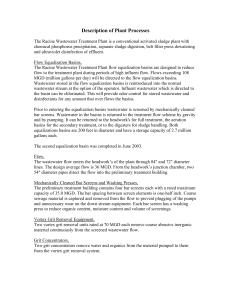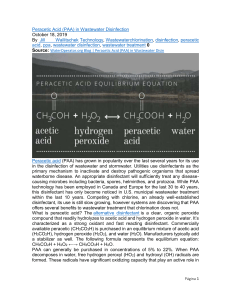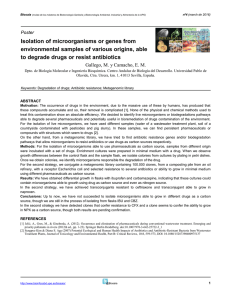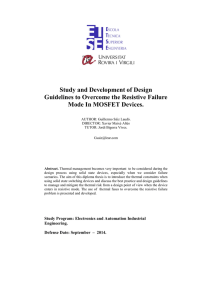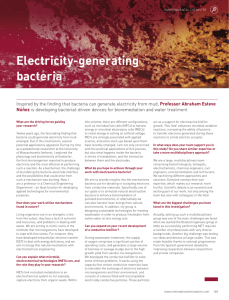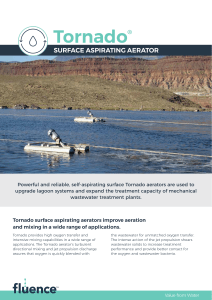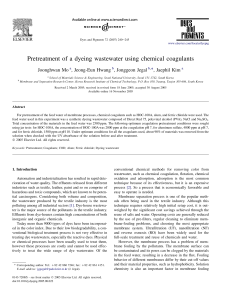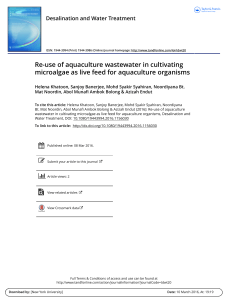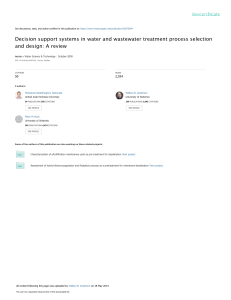WASTEWATER TREATMENT PLANTS DESIGN FOR SMALL AND
Anuncio
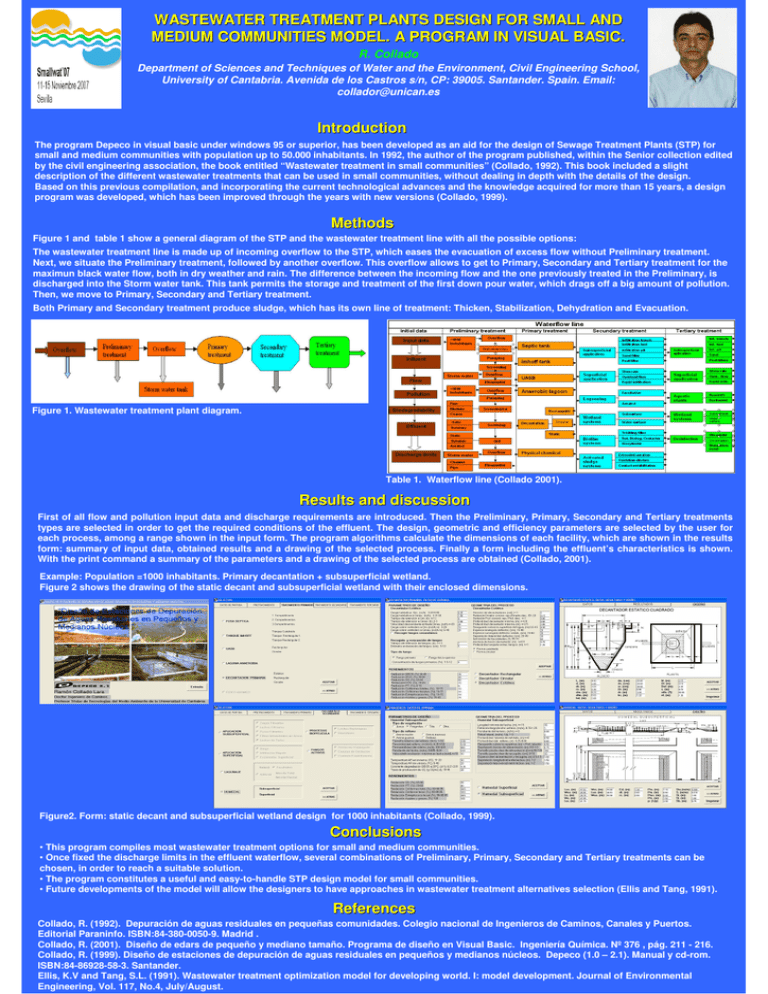
WASTEWATER TREATMENT PLANTS DESIGN FOR SMALL AND MEDIUM COMMUNITIES MODEL. A PROGRAM IN VISUAL BASIC. R. Collado Department of Sciences and Techniques of Water and the Environment, Civil Engineering School, University of Cantabria. Avenida de los Castros s/n, CP: 39005. Santander. Spain. Email: collador@unican.es Introduction The program Depeco in visual basic under windows 95 or superior, has been developed as an aid for the design of Sewage Treatment Plants (STP) for small and medium communities with population up to 50.000 inhabitants. In 1992, the author of the program published, within the Senior collection edited by the civil engineering association, the book entitled “Wastewater treatment in small communities” (Collado, 1992). This book included a slight description of the different wastewater treatments that can be used in small communities, without dealing in depth with the details of the design. Based on this previous compilation, and incorporating the current technological advances and the knowledge acquired for more than 15 years, a design program was developed, which has been improved through the years with new versions (Collado, 1999). Methods Figure 1 and table 1 show a general diagram of the STP and the wastewater treatment line with all the possible options: The wastewater treatment line is made up of incoming overflow to the STP, which eases the evacuation of excess flow without Preliminary treatment. Next, we situate the Preliminary treatment, followed by another overflow. This overflow allows to get to Primary, Secondary and Tertiary treatment for the maximun black water flow, both in dry weather and rain. The difference between the incoming flow and the one previously treated in the Preliminary, is discharged into the Storm water tank. This tank permits the storage and treatment of the first down pour water, which drags off a big amount of pollution. Then, we move to Primary, Secondary and Tertiary treatment. Both Primary and Secondary treatment produce sludge, which has its own line of treatment: Thicken, Stabilization, Dehydration and Evacuation. Figure 1. Wastewater treatment plant diagram. Table 1. Waterflow line (Collado 2001). Results and discussion First of all flow and pollution input data and discharge requirements are introduced. Then the Preliminary, Primary, Secondary and Tertiary treatments types are selected in order to get the required conditions of the effluent. The design, geometric and efficiency parameters are selected by the user for each process, among a range shown in the input form. The program algorithms calculate the dimensions of each facility, which are shown in the results form: summary of input data, obtained results and a drawing of the selected process. Finally a form including the effluent’s characteristics is shown. With the print command a summary of the parameters and a drawing of the selected process are obtained (Collado, 2001). Example: Population =1000 inhabitants. Primary decantation + subsuperficial wetland. Figure 2 shows the drawing of the static decant and subsuperficial wetland with their enclosed dimensions. Figure2. Form: static decant and subsuperficial wetland design for 1000 inhabitants (Collado, 1999). Conclusions • This program compiles most wastewater treatment options for small and medium communities. • Once fixed the discharge limits in the effluent waterflow, several combinations of Preliminary, Primary, Secondary and Tertiary treatments can be chosen, in order to reach a suitable solution. • The program constitutes a useful and easy-to-handle STP design model for small communities. • Future developments of the model will allow the designers to have approaches in wastewater treatment alternatives selection (Ellis and Tang, 1991). References Collado, R. (1992). Depuración de aguas residuales en pequeñas comunidades. Colegio nacional de Ingenieros de Caminos, Canales y Puertos. Editorial Paraninfo. ISBN:84-380-0050-9. Madrid . Collado, R. (2001). Diseño de edars de pequeño y mediano tamaño. Programa de diseño en Visual Basic. Ingeniería Química. Nº 376 , pág. 211 - 216. Collado, R. (1999). Diseño de estaciones de depuración de aguas residuales en pequeños y medianos núcleos. Depeco (1.0 – 2.1). Manual y cd-rom. ISBN:84-86928-58-3. Santander. Ellis, K.V and Tang, S.L. (1991). Wastewater treatment optimization model for developing world. I: model development. Journal of Environmental Engineering, Vol. 117, No.4, July/August.
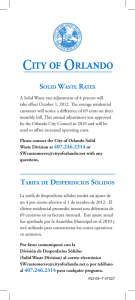
![Tríptico del curso [PDF 450KB]](http://s2.studylib.es/store/data/006258131_1-103c5de49e5ed6e7b549fd7206c4fb9a-300x300.png)

